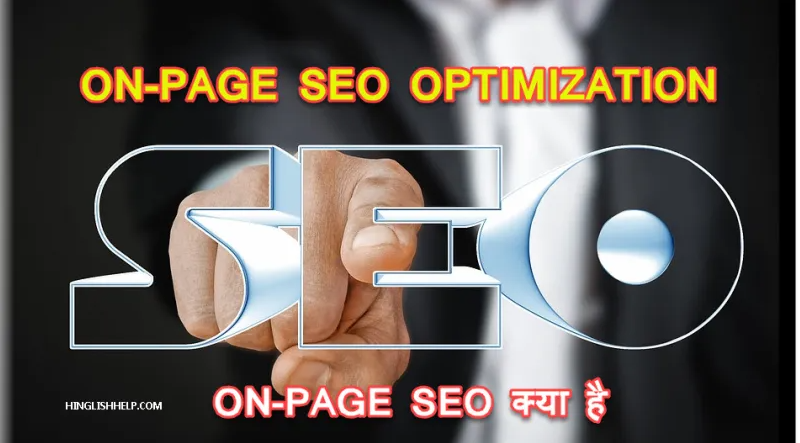An in-depth discussion of what on-page SEO is, why it matters, and how to utilize SEO tools to optimize your pages will be provided in this post.
What is on-page SEO?
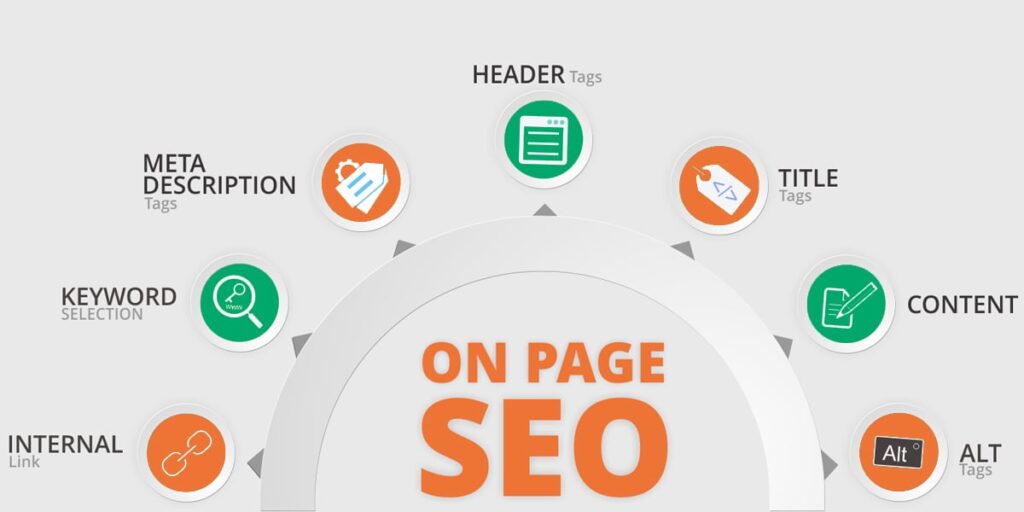
On-page SEO is the practice of improving a webpage’s search engine rankings so that it will receive more visitors from search engines. By altering the page’s content and HTML, as the name suggests, one might potentially improve their position in search engine results.
On-page SEO does not include off-page tactics like obtaining backlinks to your website or establishing domain authority because it is page-based solely.
Why is on-page SEO important?
On-page SEO provides search engines with a wealth of information about the organization and content of your website.
Utilizing titles and subheadings with your primary keyword is one example of on-page SEO. The subheadings indicate how much of the topic you’ve covered in the post, whilst the title tells search engines that your content is probably going to match particular search phrases.
Search engines are assured that your website has high-quality content and is worthy of being ranked highly if you have effective on-page SEO. Poor on-page SEO, on the other hand, might have a detrimental effect on your site’s ranks.
Having said that, it’s essential to develop content with SEO in mind.
How to create SEO content?
If the idea is unfamiliar to you, creating SEO content may seem scary, but if you grasp the fundamentals, it will likely come naturally. Follow these three steps to produce content that will be appealing to search engines:
1. Conduct keyword research
Finding out what terms your audience is using to seek on search engines is the first, essential step to producing SEO content. That is the fundamental idea behind keyword research.
Utilizing SEO tools, keyword research comprises learning which terms and phrases your target audience uses, how many people use these keywords each month, and what your competitors have already published about the subject.
You can utilize a variety of keyword research tools, including Ahrefs Keyword Explorer (my favorite), Semrush, Uber Suggest, Moz Keyword Explorer, and Keyword Surfer. You can uncover appropriate keywords to target in your industry with the use of keyword research tools. They can also be used to research keywords that are already on your radar.
Suppose you wanted to create a piece on “how to become a freelance writer,” for instance. You can see how simple (or difficult) it would be to rank for this term by using Ahrefs’ keyword explorer. Additionally, you would see a breakdown of the questions people are specifically asking about the topic, as well as an estimation of the monthly search volume for the phrase.
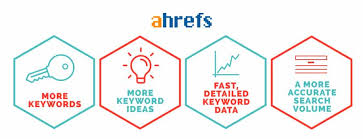
You may select which keywords are worthwhile to pursue and what you’ll need to provide to cover them completely using the information from keyword research.
2. Match search intent
Writers can make the mistake of writing only for search engines without taking their audience into account, even though they are aware of pertinent terms. Starting with matching search intent will help you create useful content. You must respond to readers’ inquiries (ideally at the beginning of the post) to match search intent.
For instance, on-page SEO is the topic of this article. Consequently, the first subheading deals with that right away. The post doesn’t start with a lengthy thesis about the evolution of SEO before eventually returning to on-page SEO. In addition, we’re addressing other related queries and demonstrating how to make your pages search-engine friendly. Intent matching is done in this manner.
You’ll obtain content that ranks better and is also helpful to readers when you match search intent and optimize for search engines (more on that in a bit). Search engines understand that your content is of high quality when people spend more time on your website pages and share it with others on social media or with their peers. Higher ranks follow from this.
3. Site structure and post structure
Subheadings serve more than just aesthetic purposes. They inform search engines about the scope of your post and, if done correctly, can raise your ranks. The categories on your website and the way posts and pages are arranged follow the same rules.
For instance, if you publish an article on “how to become a freelance writer” but never use the subheading with your keywords, it is doubtful that your post will rank. Because of this, even if you write an insightful piece but don’t use subheadings correctly, few people will locate it on search engine result pages.
Use the proper header hierarchy as well. The consensus among experts is that H1s should only be used for post titles. After that, H2, H3, and so forth can be utilized as header tags. While this doesn’t directly assist SEO, it does make your material simpler to read and crawl, increasing the likelihood that it will rank on search engines—assuming you’ve already generated excellent content.
How to optimize your SEO content?
It’s time to begin optimizing your SEO content once you’ve written it (or created a plan to produce it). The following three actions are necessary for search engine optimization of your content:
Include your keyword
Although there isn’t a set rule for how frequently your keyword should appear in your writing, experts do agree on one thing: your post ought to include your keyword. When you write about a subject, you’ll unavoidably include the theme or associated words a few times throughout the essay.
However, you should stay away from the tactic known as “keyword stuffing.” This is when keywords are crammed into a piece of writing—even in unnatural ways—just to meet a minimum number of mentions. For using too many keywords, search engines like Google may penalize your page.
Add internal links
Internal linking is another underutilized on-page SEO smart practice. This relates to pointing out other on-site information that is linked to.
Internal links with descriptive anchor text to related material perform best. They will be easier for search engines to understand, and readers will be more likely to click on them.
Use images and alt-text
Images are an effective on-page SEO component. They can be found more easily than the actual articles because they can rank on search engine visual searches. Additionally, graphics can add enjoyment to articles by breaking up text-heavy portions. Some image styles, like infographics, are also simpler to share and can increase the popularity of your content.
You should include evocative alt-text to your photos, preferably one that contains your post’s keyword, to maximize their potential as on-page SEO components. The use of alt-text can increase the accessibility of your website and the reading experience for persons who are blind.
Additional actions for image SEO optimization include:
- selecting a picture that goes with your content
- Using a pertinent image name (ideally one that includes your keyword)
- Images should be resized and optimized to load more quickly (which boosts on-page SEO).
- updating your site’s XML sitemap with images
- If necessary, add subtitles to your images so that viewers may profit from them.
We’ve thought of a lot of things you can do to produce SEO content, but as you may have observed, many of these things need tools to be carried out.
Useful on-page SEO tools
If you want to do a good job with SEO in general, you need to have a few key tools. The same applies to on-page SEO.
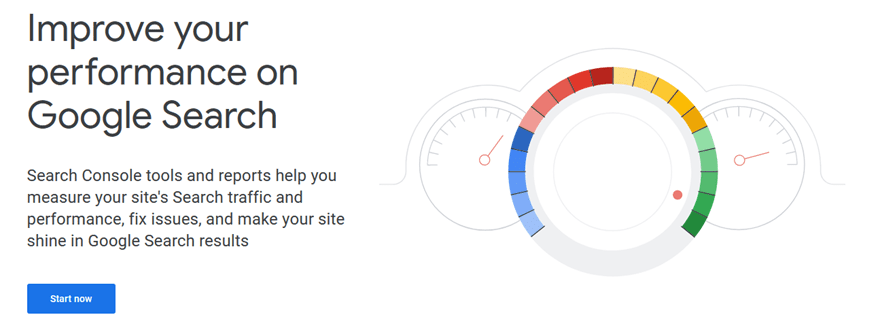
This Google tool assists you in optimizing your website for Google, tracking traffic, locating critical website faults, and determining the most popular search terms. To assist your site ranking more quickly, you can submit sitemaps and URLs for crawling.
Ahrefs Keyword Explorer
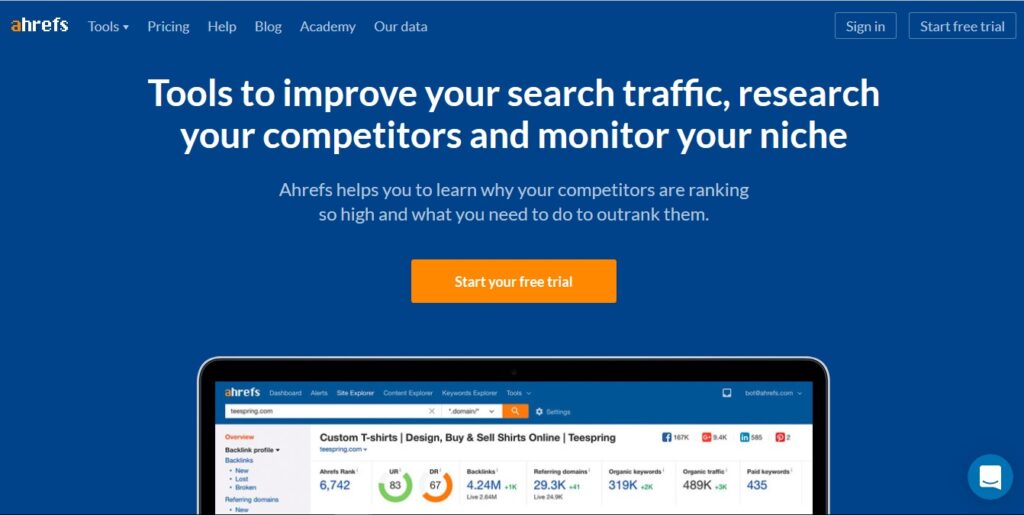
The all-inclusive SEO tool Ahrefs, as we previously stated, can be used for keyword research, competitive gap analysis, website SEO audits, and much more. Additionally, you may check your website for broken links or page faults, see which material is most popular in your sector, and research the content of your rivals.
Semrush, another all-encompassing SEO tool, is preferred by certain SEO specialists over Ahrefs.
Clear scope
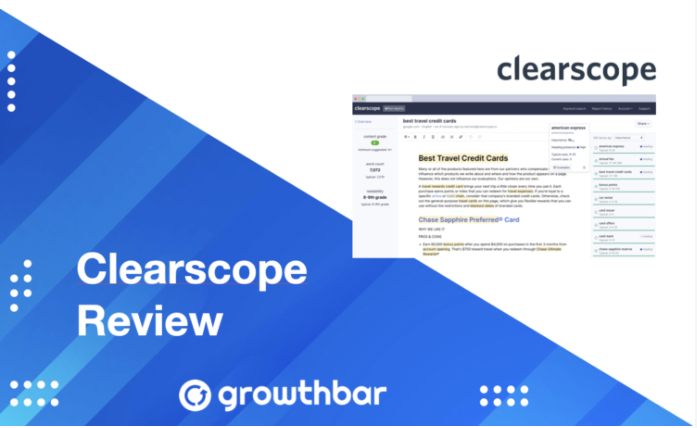
Using the artificial intelligence SEO tool Clearscope, you may develop content that complies with search intent. It assesses the most popular content for your keyword and offers a list of pertinent keywords to direct your content creation. The score is then calculated for other content.
Frase A less expensive option to Clearscope is io.
Google Developers PageSpeed Insight
Site speed is an important aspect of on-page SEO that we haven’t yet covered. Slow websites can irritate visitors, raise bounce rates, and tell search engines that your site is not a reliable source of information. This Google tool analyses the page performance of your website and offers recommendations on how to speed it up.
On-page SEO: FAQs
What is the most important on-page SEO factor?
No one component is the most crucial. Most components require the others to function. Even if you publish fantastic content, it probably won’t rank if your keyword isn’t in the title or meta description. The fundamentals of on-page SEO are as follows:
- Matching writing to search intent
- enhancing headers, meta descriptions, and titles
- Including pertinent photos and alt-text
Start with this, and you can add more later.
What is an example of on-page SEO?
Internal linking, headings and subheadings, pictures, and alt-text are a few examples of on-page SEO. When optimized, each of these page elements can raise the content’s search engine positioning and increase visitors.
Wrap-up and further reading
For a website to be successful and rank well in search engines, on-page SEO is essential. SEO is simpler to execute after doing some research, even though it can initially sound like nonsense. Serving your readers well is the secret to excellent SEO content.
Use headings and subheadings to give your content structure, graphics to make it more visually appealing, and naturally woven keywords to indicate relevance to search engines.

